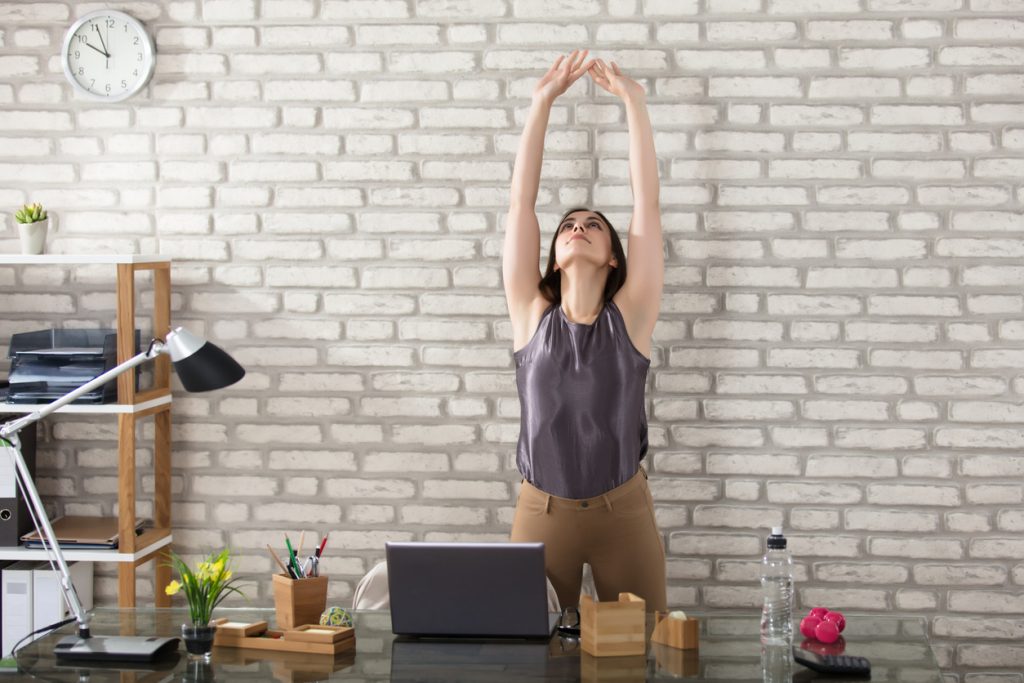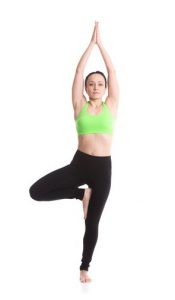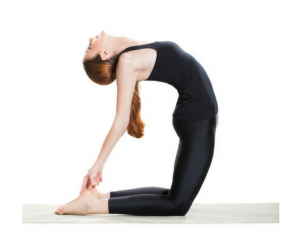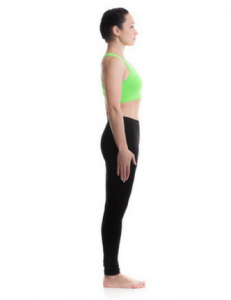Yoga teachers often speak about gratitude. So, what does this word really mean?
I’ll tell you what it means to me.
When I was younger and someone talked about being grateful for something that I perceived as not going right in my life or something as simple as the grass or sky, I was baffled; I couldn’t wrap my mind around it or align with this grateful feeling. I lamented about what I felt was lacking in my life, unaware that this was in fact the opposite of gratitude.
How Gratitude Can Help
Lately, I’ve been feeling some frustration around the outward manifestation of my goals versus my effort and hard work. I feel ready for a next step or chapter that has yet to appear. When I focus on this feeling of lack that is what expands in my life; it’s a downward spiral … kind of like Debbie Downer. But if I get up close and personal with this frustration (really feel it) and then, when I’m ready, thank it for, or at least acknowledge, the motivation it is stirring within me to be proactive, I begin to shift my energy into a more open-minded state.
It is not an easy practice, this business of thanking the challenges and struggles. It’s one thing to say it, to recognize that challenges enable us to grow (especially after the fact, when you are looking back at them), but when you’re going through them it’s a different story. The first step is to sit or lie down and imagine breathing into this obstacle. When I do, I can feel my body resisting, my breath constricted, until I finally being to soften around the tight places and allow more space into my body/mind. With each breath I become a little lighter. I might say at the close of my meditation, “Thank you (universe or spirit) for bringing me deeper into my heart; thank you for supporting me as I (create more abundance in my life, for example).” It may sound corny but it’s worth a try.
A gratitude practice enables you to release resistance and therefore accept life as it is in this moment and that brings a sense of peace and wellbeing.
I have also learned, during my many years of practicing yoga, to notice the so-called small things and to recognize the beauty, magic, wisdom, etc. in them. Yoga teaches us how to slow down, to be more present; this has allowed me to notice and find joy in things like: a child playing, an exquisite creature (we tend to overlook birds, for example), a tree, a person smiling, the sky, the light of the moon. When you become more present in you life you naturally become more grateful; awe-struck by the majesty and wonder of the life all around you. You wonder how you lived in such a closed-off state beforehand, how you could have slept walk through so many years of your life. Presence and gratitude are one in the same.
Gratitude List
Writing a Gratitude list can help to re-shift your focus from a feeling of lack to fulfillment. I use this exercise with my young students.
Here is my list today:
- 1. My mini-tiger friends. They double as an alarm clock: little paws in the face every morning. They have taught me about unconditional love.
- 2. Bare feet. As a yoga teacher, I get to be sans shoes and socks a lot. I love and crave the feeling of the ground or earth under my tootsies.
- 3. Time outdoors and in nature. It is truly healing for me.
- 4. My students. People who are receptive to what I have to share. I have had the pleasure of connecting with beautiful souls on this teaching path.
- 5. My fears. Since young, I have had a deep seated fear of speaking in front of others, of being seen and heard. Joseph Campbell wrote: “The cave you fear to enter holds the treasure you seek.”
- 6. Messups. I am fearful of making mistakes. When I mess up, I want to run for the hills and go into hiding forever. I am gaining perspective in this area.
What are some of the things you’re grateful for? Your list can be made up of words, phrases, musings, images; you can make it creative or simple. By the way, gratitude isn’t about putting a phoney smile on your face and pretending your happy when you’re not; it’s about exploring emotions and then doing your best to accept and make friends with them because that is the most powerful place from which to create and manifest your goals and dreams.


 The first of these 7 primary chakras is called Muladhara, or the root chakra. The term ‘mula’ translates to root, and the term ‘adhara’ translates to foundation or base. Therefore, Muladhara is a perfect term for the first chakra. Yoga and Ayurveda, yoga’s ancient sister science, teach us that the root chakra is located at the base of the spine or coccyx. The anatomical location of this energy center includes the first three vertebrae and the pelvic floor or perineum. It’s additionally associated with the organs and structures responsible for elimination, the skeletal structure, and blood.
The first of these 7 primary chakras is called Muladhara, or the root chakra. The term ‘mula’ translates to root, and the term ‘adhara’ translates to foundation or base. Therefore, Muladhara is a perfect term for the first chakra. Yoga and Ayurveda, yoga’s ancient sister science, teach us that the root chakra is located at the base of the spine or coccyx. The anatomical location of this energy center includes the first three vertebrae and the pelvic floor or perineum. It’s additionally associated with the organs and structures responsible for elimination, the skeletal structure, and blood. Sukhasana, Easy Pose: a seated cross-legged position, this pose allows the parts of the body associated with the root chakra to physically touch the ground. This pose is meant to invoke stability and a sense of trust from within
Sukhasana, Easy Pose: a seated cross-legged position, this pose allows the parts of the body associated with the root chakra to physically touch the ground. This pose is meant to invoke stability and a sense of trust from within Our jobs as yoga teachers is to listen, offer compassion, and use the asana to facilitate openness, even if momentarily. In the high powered, maximum intensity life can sometimes feel like, yoga provides relief.
Our jobs as yoga teachers is to listen, offer compassion, and use the asana to facilitate openness, even if momentarily. In the high powered, maximum intensity life can sometimes feel like, yoga provides relief. Meditation benefits are abundant. Studies indicate that meditation can lower blood pressure and stress levels. Meditation allows you to tune in to, to listen internally. Noticing the fluctuations and natural course of your thinking, helps the mind find stillness. By observing, you’re able to let go of attachment to outcomes and results. Find 10 minutes a day to sit down and go inward. Begin by finding a comfortable seat. Propping your sit bones up on a blanket, cushion, etc. will make it easier to sit for an extended period of time. A mantra to begin with can be as simple as “let go”. On the inhale, silently repeat to yourself “let” and on the exhale, silently repeat to yourself “go”. Meditating is a great practice to do daily for self-care.
Meditation benefits are abundant. Studies indicate that meditation can lower blood pressure and stress levels. Meditation allows you to tune in to, to listen internally. Noticing the fluctuations and natural course of your thinking, helps the mind find stillness. By observing, you’re able to let go of attachment to outcomes and results. Find 10 minutes a day to sit down and go inward. Begin by finding a comfortable seat. Propping your sit bones up on a blanket, cushion, etc. will make it easier to sit for an extended period of time. A mantra to begin with can be as simple as “let go”. On the inhale, silently repeat to yourself “let” and on the exhale, silently repeat to yourself “go”. Meditating is a great practice to do daily for self-care. Mindfulness, however, does not necessarily require a
Mindfulness, however, does not necessarily require a 

 Sometimes with a lack of productivity all you need is to reduce distraction and get still by centering yourself. Easy pose is the perfect way to accomplish this.
Sometimes with a lack of productivity all you need is to reduce distraction and get still by centering yourself. Easy pose is the perfect way to accomplish this. One of the benefits of mild inversions, like Downward Facing Dog, is its energizing qualities. Whenever your heart is placed over your head the brain is supplied with more oxygen as blood flows which increases concentration and mental function.
One of the benefits of mild inversions, like Downward Facing Dog, is its energizing qualities. Whenever your heart is placed over your head the brain is supplied with more oxygen as blood flows which increases concentration and mental function. Challenging your balance is one sure way to boost productivity. Whenever your center of gravity is confronted you are forced to tune your drishti, or focal point, in order to be successful.
Challenging your balance is one sure way to boost productivity. Whenever your center of gravity is confronted you are forced to tune your drishti, or focal point, in order to be successful. Heart opening or back-bending postures like Camel pose help to quiet all of the chatter in the mind. Some consider this pose to be quite challenging as you are vulnerably opening a part of your body that is often shielded and protected, your heart.
Heart opening or back-bending postures like Camel pose help to quiet all of the chatter in the mind. Some consider this pose to be quite challenging as you are vulnerably opening a part of your body that is often shielded and protected, your heart. As a pose that seems pretty simple and straight forward, Mountain pose offers great benefits of improving concentration and focus in order to be more productive.
As a pose that seems pretty simple and straight forward, Mountain pose offers great benefits of improving concentration and focus in order to be more productive.
 I’ve always been involved in athletics. Although I wouldn’t necessarily call myself an athlete – the competitive nature of sports has carried over into my fitness regime. I’ve always wanted to be the strongest, fastest, or comparing the number of reps I get in before taking a rest break to the gal next to me. Through my yoga practice, I’ve learned three important things that allows me to maximize workouts so that when that competitive edge creeps up on me, I know I can crush my goals! Through finding my breath, improving my flexibility, and gaining more balance I can bring enjoyment, ease, and productive to all activities – whether it’s running, lifting weights, or going for a 90 minute Bikram session.
I’ve always been involved in athletics. Although I wouldn’t necessarily call myself an athlete – the competitive nature of sports has carried over into my fitness regime. I’ve always wanted to be the strongest, fastest, or comparing the number of reps I get in before taking a rest break to the gal next to me. Through my yoga practice, I’ve learned three important things that allows me to maximize workouts so that when that competitive edge creeps up on me, I know I can crush my goals! Through finding my breath, improving my flexibility, and gaining more balance I can bring enjoyment, ease, and productive to all activities – whether it’s running, lifting weights, or going for a 90 minute Bikram session. When you think of balance on the mat, you may think of the “I can stand on one foot with my eyes closed for 30 seconds” kind of balance. Balance in yoga helps us to bring balance into our lifestyles. As you go through your asanas, it forces you to use several muscle groups; moving from a stretch in Downward Facing Dog to tightening the core – to hopping in between the hands – to flexing the triceps to hover just above the mat in Chaturanga. In Tree Pose, you also encounter the need for flexibility and strength to find the balance you need when you tuck your foot, lift the chest, move your hands to heart center and dare to close your eyes.
When you think of balance on the mat, you may think of the “I can stand on one foot with my eyes closed for 30 seconds” kind of balance. Balance in yoga helps us to bring balance into our lifestyles. As you go through your asanas, it forces you to use several muscle groups; moving from a stretch in Downward Facing Dog to tightening the core – to hopping in between the hands – to flexing the triceps to hover just above the mat in Chaturanga. In Tree Pose, you also encounter the need for flexibility and strength to find the balance you need when you tuck your foot, lift the chest, move your hands to heart center and dare to close your eyes.

